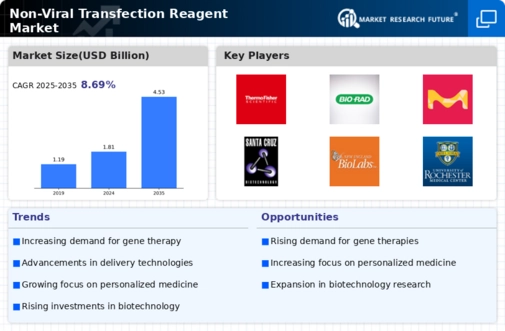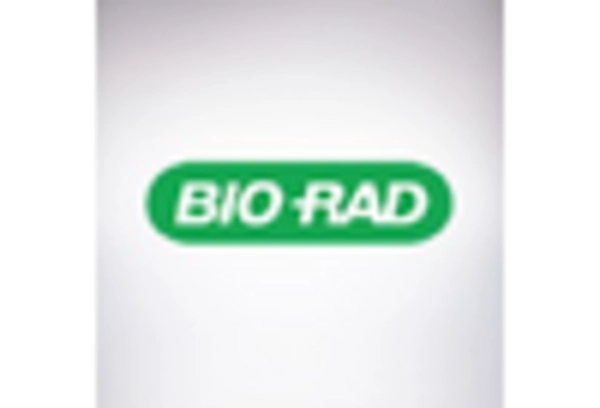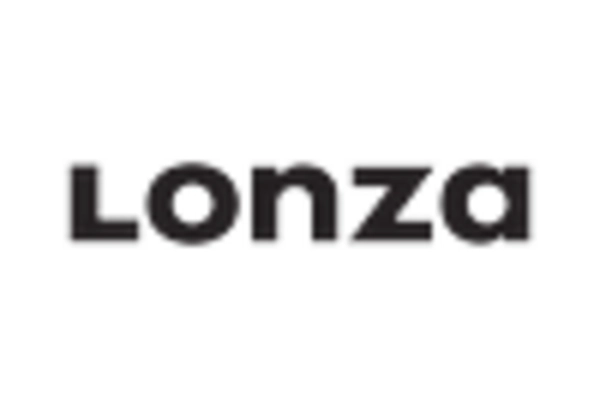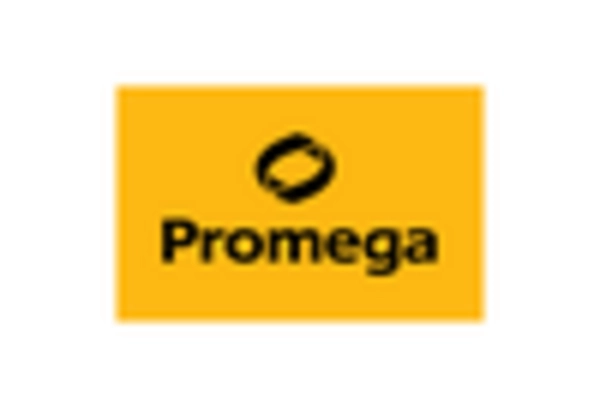Growing Focus on Gene Therapy
The growing focus on gene therapy is a pivotal driver for the Non-Viral Transfection Reagent Market. As the understanding of genetic disorders expands, there is an increasing emphasis on developing gene-based therapies to treat a variety of conditions. This shift is supported by advancements in gene editing technologies, which are facilitating the creation of targeted therapies. The gene therapy market is projected to reach USD 13.3 billion by 2026, underscoring the potential for growth in this sector. Non-viral transfection reagents are essential for the successful delivery of therapeutic genes, making them indispensable in the development of gene therapies. As the industry continues to evolve, the Non-Viral Transfection Reagent Market is likely to experience significant growth driven by the demand for effective gene delivery systems.
Rising Demand for Personalized Medicine
The Non-Viral Transfection Reagent Market is experiencing a notable surge in demand for personalized medicine. This trend is driven by the increasing recognition of the need for tailored therapeutic approaches that cater to individual patient profiles. As healthcare systems evolve, the focus shifts towards treatments that are more effective and have fewer side effects. The market for personalized medicine is projected to reach USD 2.4 trillion by 2025, indicating a robust growth trajectory. Non-viral transfection reagents play a crucial role in the development of personalized therapies, enabling precise gene delivery and expression. This growing demand for customized treatments is likely to propel the Non-Viral Transfection Reagent Market forward, as researchers and clinicians seek innovative solutions to enhance patient outcomes.
Increased Investment in Biotechnology Research
The Non-Viral Transfection Reagent Market is benefiting from increased investment in biotechnology research. Governments and private entities are allocating substantial funds to support research initiatives aimed at developing novel therapies and biopharmaceuticals. This influx of capital is fostering innovation and accelerating the development of new transfection reagents. According to recent reports, global investment in biotechnology reached approximately USD 500 billion in 2023, with a significant portion directed towards gene therapy and genetic engineering. As research institutions and biotech companies seek to enhance their capabilities, the demand for effective non-viral transfection reagents is likely to rise, further propelling the growth of the Non-Viral Transfection Reagent Market.
Expansion of Research and Development Activities
The expansion of research and development activities across various sectors is significantly impacting the Non-Viral Transfection Reagent Market. Academic institutions, pharmaceutical companies, and biotechnology firms are increasingly investing in R&D to explore new therapeutic avenues and enhance existing technologies. This trend is reflected in the rising number of clinical trials and research projects focused on gene delivery and genetic modification. In 2023, the number of active clinical trials involving gene therapy exceeded 1,500, indicating a robust interest in this field. As R&D activities intensify, the demand for non-viral transfection reagents is expected to grow, as researchers seek reliable and efficient tools for gene delivery. Consequently, the Non-Viral Transfection Reagent Market is likely to thrive in this dynamic research environment.
Technological Advancements in Transfection Methods
Technological advancements in transfection methods are significantly influencing the Non-Viral Transfection Reagent Market. Innovations such as electroporation, lipofection, and microinjection are enhancing the efficiency and effectiveness of gene delivery systems. These advancements are not only improving transfection rates but also expanding the range of applications for non-viral reagents. For instance, the introduction of novel lipid-based formulations has been shown to increase cellular uptake and reduce cytotoxicity. The market for transfection reagents is expected to grow at a CAGR of 10.5% from 2023 to 2030, reflecting the impact of these technological improvements. As researchers continue to explore new methodologies, the Non-Viral Transfection Reagent Market is poised for substantial growth, driven by the demand for more effective and versatile transfection solutions.

















Leave a Comment